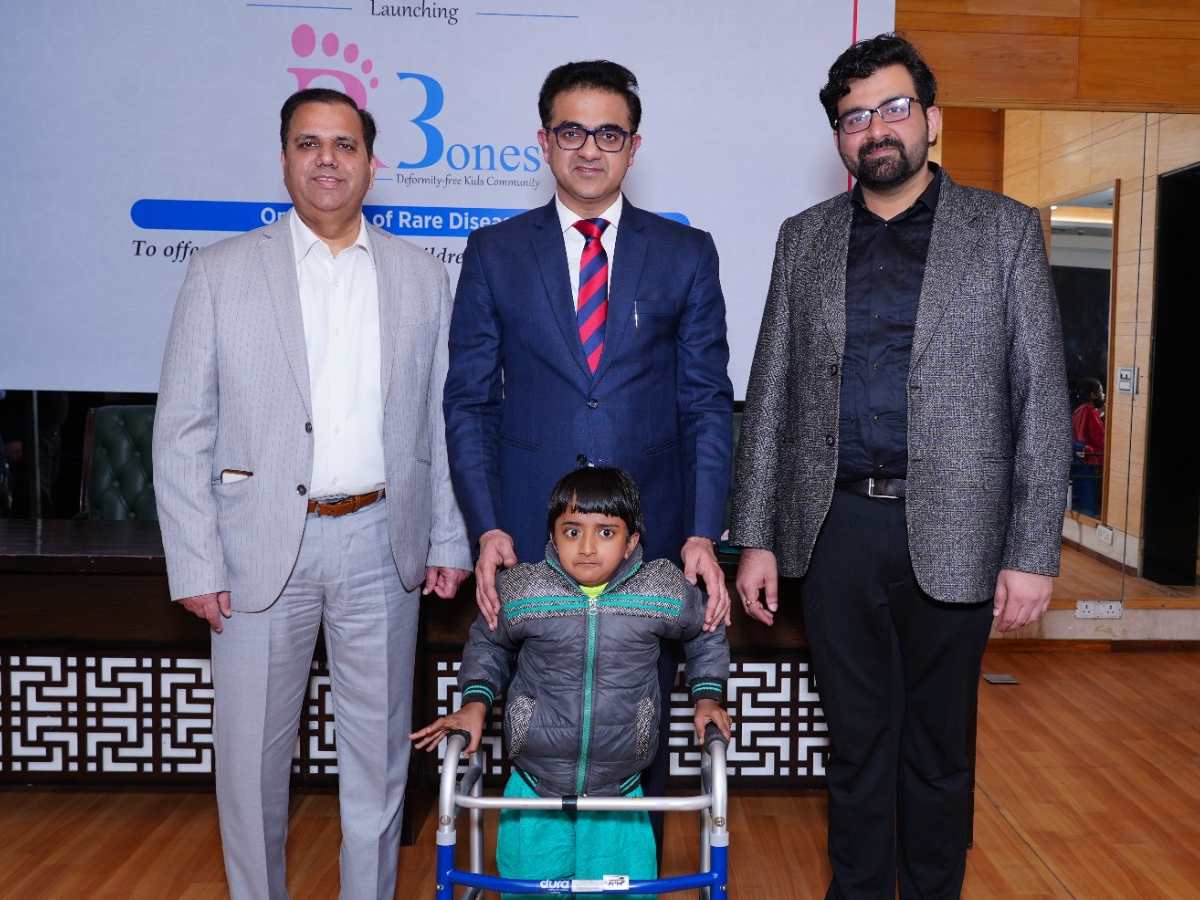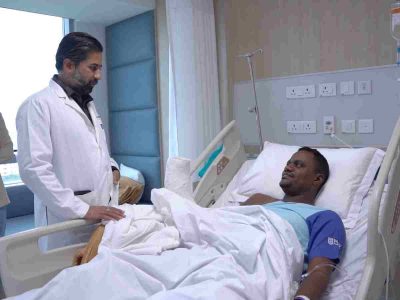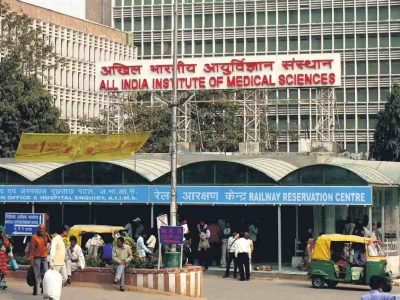Delhi: A nine-year-old girl born with a rare bone condition, NF2 with congenital pseudoarthrosis of the tibia, can now stand and walk after a ground-breaking surgery at Aakash Hospital, offering her a new chance at mobility and independence.
NF2 with congenital pseudoarthrosis of the tibia is an extremely rare condition in which individuals with NF2—a genetic disorder primarily affecting the nervous system—also experience a congenital bone defect in the tibia.
Born with a rare condition that left her legs severely bowed, she struggled with mobility from an early age. Despite undergoing surgery at the age of six, her condition did not improve. Instead, the deformity persisted, making her childhood difficult and limiting her ability to move freely.
Also read: Delhi: AIIMS surgeons remove parasitic twin from 17-year-old boy
Speaking to Patriot, Dr Aashish Chaudhry, Director & Head, Department of Orthopaedics & Joint Replacement, Aakash Healthcare, said, “The child has taken her first steps toward a more mobile and independent future as, for the first time, she was able to walk.”
“The child’s medical journey has been anything but simple. She was diagnosed with a rare condition,” Dr Chaudhry said.
When asked about the biggest challenge in curing the disease, Dr Vikram Khanna, Senior Consultant in Orthopaedics & Joint Replacement at Aakash Healthcare, explained that the patient’s bones refused to fuse properly after surgery, leaving her with fragile, non-healing limbs.
Explaining the complexities involved in treating such a case, Dr Khanna said, “The primary challenge was the non-union of bone ends, meaning the bones did not heal together as expected. Additionally, her bone marrow was very thin, and the overall bone quality was poor, making healing difficult. Even if we managed to treat her, the risk of refracture was extremely high.”
“Given these hurdles, the medical team had to carefully weigh all available treatment options. While traditional surgeries like bone plating, nailing, and standalone bone grafting were considered, doctors ultimately decided on a multi-step approach to maximize the child’s chances of recovery,” Dr Khanna said.
Doctors performed a complex surgical procedure to address multiple aspects of the girl’s condition, ensuring long-term success. They first removed abnormal tissue growth, known as hamartomas, from both legs. A bone graft was then performed to aid healing and provide structural support, according to the Senior Consultant in Orthopaedics & Joint Replacement.
“To stabilise the tibia, doctors inserted a Titanium Elastic Nailing System (TENS) and reinforced it with K-wiring of the fibula. An Ilizarov external fixator was also applied to hold the bones in place and promote proper healing,” Dr Khanna explained.
“The Ilizarov frame remained for six months until X-rays confirmed bone union. During this period, we encouraged the patient to walk with a walker to strengthen her healing bones,” said Dr Chaudhry.
Also read: Retired Delhi doctors battle for pension rights
“Although the surgery was successful, her recovery is ongoing. The TENS nails will stay in her tibia until she completes her growth spurt to minimise the risk of refracture. Even after removing the external fixator, she must wear a plaster cast or brace for five to six years for added protection,” Dr Chaudhry noted.
“Routine X-rays every six months will be necessary to monitor her bone health. We remain optimistic that with continued bracing, rehabilitation, and regular follow-ups, she will be able to lead an active and functional life,” said Dr Chaudhry.





